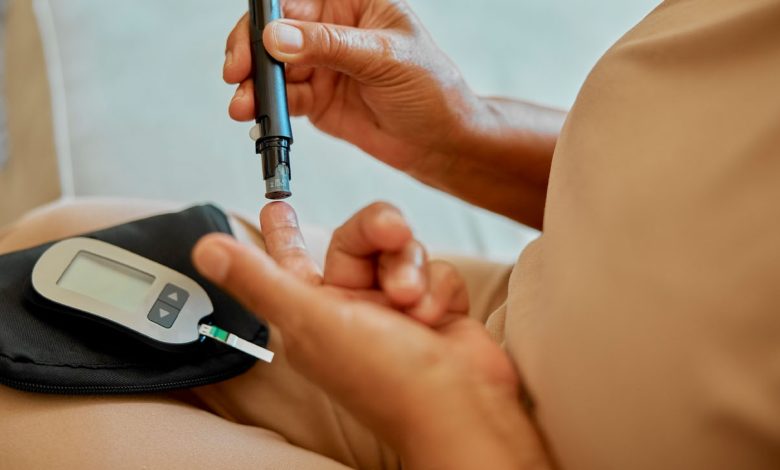Diabetes Continues to Largely Impact Low-Income Black and Brown Communities

By Magaly Muñoz
Communities of color, particularly Black and Brown people, are amongst the most affected by Type 2 diabetes (T2D) due to socioeconomic status, cultural, and environmental factors.
More than 38 million people in the US have diabetes, with up to 95% having Type 2 diabetes. While individuals aged 45 and older are typically the age range for those being diagnosed, more and more children and young adults are developing the chronic illness, according to the CDC.
Of the 1 in 10 people with diabetes, 16.4% of Black people and 14.7% of Hispanic people make up the highest rates among different groups.
Dr. Kevin Peterson, vice president of Primary Care at the American Diabetes Association, said in an email that the environments where Black and Brown people historically live, such as areas of high carbohydrate diets, contribute to the prevalence of this illness.
But family history can also have a part to play in someone’s diagnosis. Although it is not always a determining factor, first-degree relatives, like parents, with Type 2 diabetes can increase someone’s risk of developing the same condition.
Doctors recommend that if there is that direct link, taking precautions such as a healthy diet and exercise can minimize or eliminate the chances of having T2D.
But Peterson also acknowledged that there can be difficulties with maintaining a healthy lifestyle for Black and Brown communities.
“It can be difficult in low-income communities to access healthy eating choices, and opportunities for activity can often be limited,” Peterson said. “Being creative in finding an activity that is available in your situation, finding a friend to assist you, and identifying healthy foods that you like and are available is a struggle worth taking on.”
Food deserts are one systemic factor in how people, especially low-income communities, develop chronic illnesses that can cause irreversible damage. These deserts are areas that lack easy accessibility to fresh and healthy food options.
Dr. Lloyd Stockey, MD, Internal Medicine at Kaiser Oakland Medical Center, said low-income people of color would be less susceptible to chronic illnesses like type 2 diabetes if they had more access to nutritious food.
“When you go into lower income areas or areas where people of color live, you typically see a lot of things that affect diabetes – tobacco, alcohol and fast food,” he said. “When you go out to other more affluent areas, you see more farmers’ markets, more boutique places to eat, and healthier choices. You don’t see all of that fast food.”
One of the most important things to do when talking to patients about their diagnosis, Stockey said, is meeting them where they are at. People come from all different walks of life whether that socioeconomic status, education levels, or willingness to listen to the problems they have that are contributing to their T2D.
He’s encountered patients who know exactly what the illness is, how they want to make lifestyle changes and who want to keep up with their medicine, but then there are many who are the complete opposite. These patients can be harder to get through to but no resource is left unturned for them.
Dr. Walter Acuña, MD, Internal Medicine at Kaiser Oakland Medical Center, said it’s also important to understand people’s cultures and upbringings. He understands that Latino and Black patients might be used to certain kinds of diets that are carb heavy, but added that making little changes can prevent people from having to give up the food they love.
Acuña also explained that lower income people often have time restraints or live in neighborhoods where they don’t feel safe taking a 30-minute walk. Exercising in the living room or watching online workout tutorials are excellent alternatives and can help to improve overall health.
T2D is a lifelong chronic illness but it doesn’t have to dictate someone’s life, doctors say. As long as you’re taking your prescribed medicine, watching what you eat and actively trying to make lifestyle changes, the long term risks, like liver or kidney problems, eyesight issues or early death, can be reduced.





